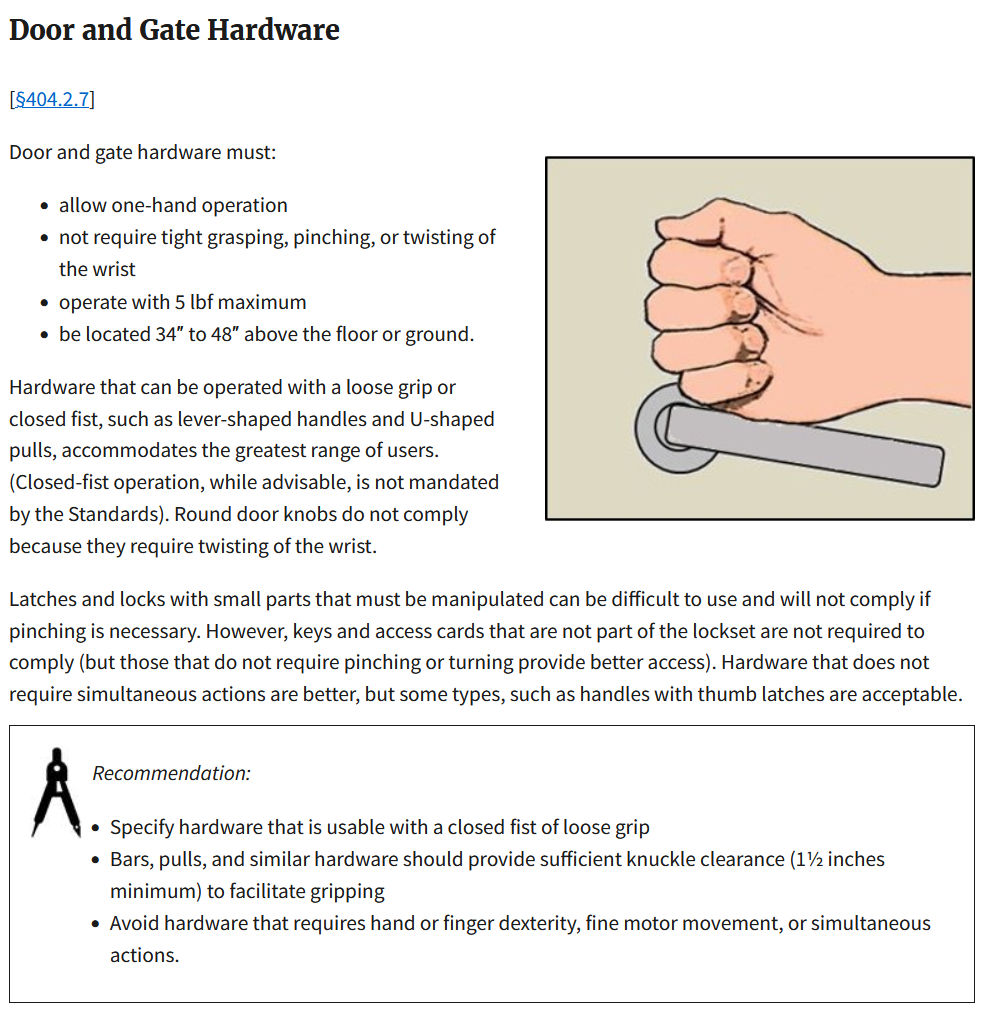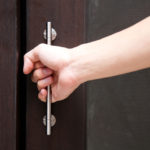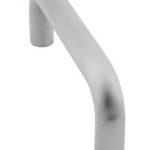A Quick Question came up the other day about the door pulls used for sliding doors, including pocket doors:
Where in the codes or standards does it specify the required amount of clearance around the surface-mounted pull handle?
The short answer: Nowhere.
The longer answer:
In a perfect world, the answer to every question would be found in the codes or standards. In the last 20+ years, the Builders Hardware Manufacturers Association has made A LOT of progress toward getting the detailed requirements for door openings addressed correctly in the model codes and referenced standards. But there are always new products and technologies, emerging threats, and questions/interpretations that had not been brought to our attention before.
For hardware on swinging doors, the codes and standards do not include prescriptive requirements for the clearance behind door pulls (or levers, for that matter). Many manufacturers’ catalogs show certain pulls as “ADA-compliant”, but to date no manufacturer has been able to tell me where that designation came from. The ADA standards require hardware that is operable without tight grasping, pinching, or twisting of the wrist, but there is a lot of room for interpretation.
As I have mentioned before, the US Access Board has an online guide to the ADA Standards, and there is a Commentary version of ICC A117.1 which has additional information about the accessibility standard referenced by the I-Codes. From these publications we can learn more about the intent of the standards, even when detailed requirements are not included in the official documents. I highly recommend the use of these resources, as well as the Commentary and Handbook versions of other codes and standards.
The ADA Guide includes a recommendation for 1 1/2 inches of clearance for door hardware, which is consistent with the required clearance for grab bars. Here is a portion of the guide related to hardware operation:
So, what about sliding door hardware? The ADA Standards state: “Where sliding doors are in the fully open position, operating hardware shall be exposed and usable from both sides.” My interpretation (and that of many AHJs) is that the old-school edge pulls that disappear into the edge of the pocket door would not be compliant. Most sliding doors installed today have surface-mounted pulls that prevent the door from sliding all the way into a pocket or beyond the opening if the door slides on the face of the wall. This way, the pulls are exposed from both sides when the door is fully open. And what makes the door pull usable? Pulls that require no tight grasping, pinching, or twisting of the wrist, and provide at least 1 1/2 inches of knuckle clearance behind the pull and on each side.
What do you think?
You need to login or register to bookmark/favorite this content.












Have been installing a lot of sliding doors the past 10+ years, mostly “Barn style” Track mounted on wall, and the AD Systems door units for medical offices, I’ve always followed the ADA guide for 1-1/2″ min clearance at the jamb, both fully open, and fully closed. Plus adjusting if needed for the ADA guide of a minimum of 28″ clear opening.
Pocket doors are some times a problem with surface mounted handles, holding both clearances.
Some pocket doors required a lockable door, similar to the Adam Rite style mortise lock. If the door opening is only 36″ it’s tough to get the 28″ opening clearance, but most of these units are in the “back-of-the-house” and have not been called out on it…….yet. I follow the 40″ AFF centered rule for handles no mater the length of the pull handle.